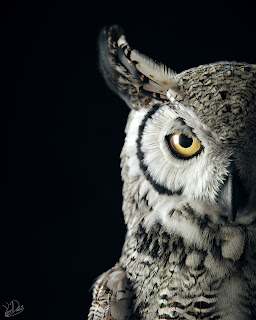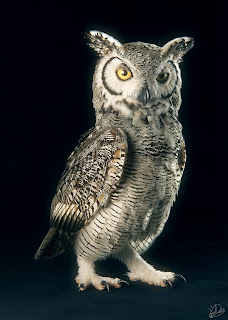In this project, I tried to create a photorealistic and anatomically accurate model of Subarctic Great Horned Owl. All grooming and scattering works of feathers I used Yeti, the owl has real fiber feathers (total count feathers - 6327 and 2188922 fibers) and I didn't use any poly plane feathers. As always, for shading, I used melanin centric Arnold Hair shader with a complex network.
Example shading of the body and the wing:
Average render time: 8k ~32h, 4k (head images) ~14h. Also, I want to say many thanks to my friend Maxim Shamarin for helping in rendering on his workstation.
I chose 5 color correction style and below you can see these images
And some fun stuff- mesh without feathers:
Example shading of the body and the wing:
I chose 5 color correction style and below you can see these images
And some fun stuff- mesh without feathers:





















































